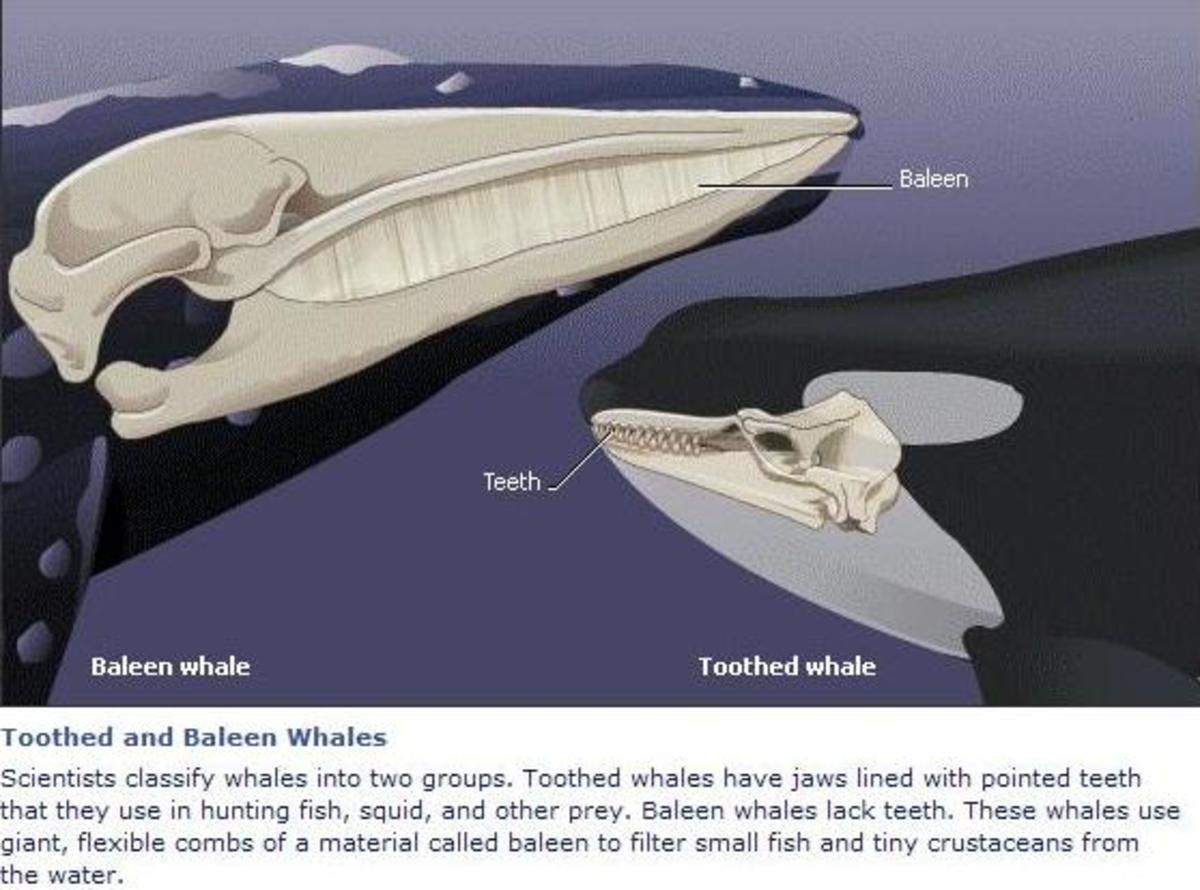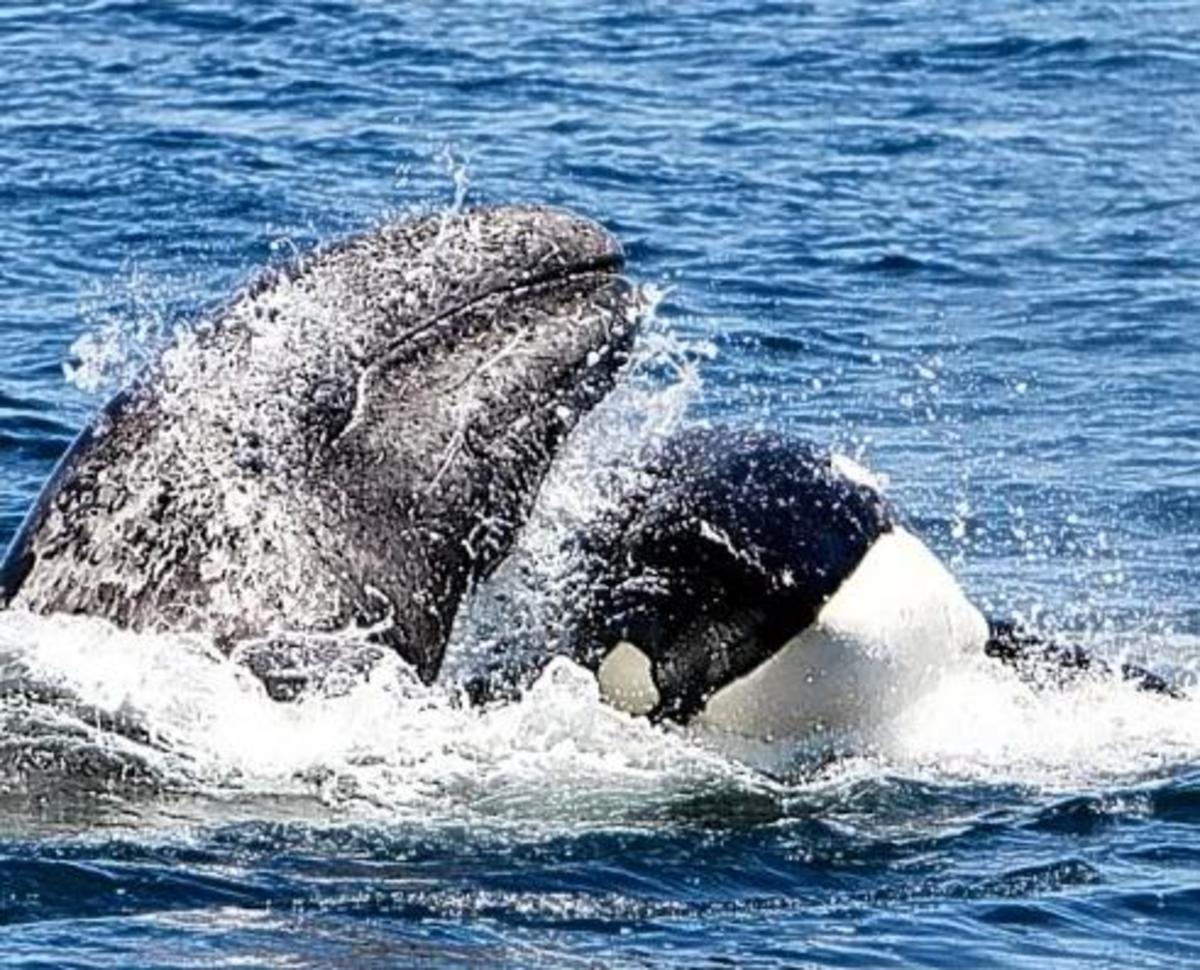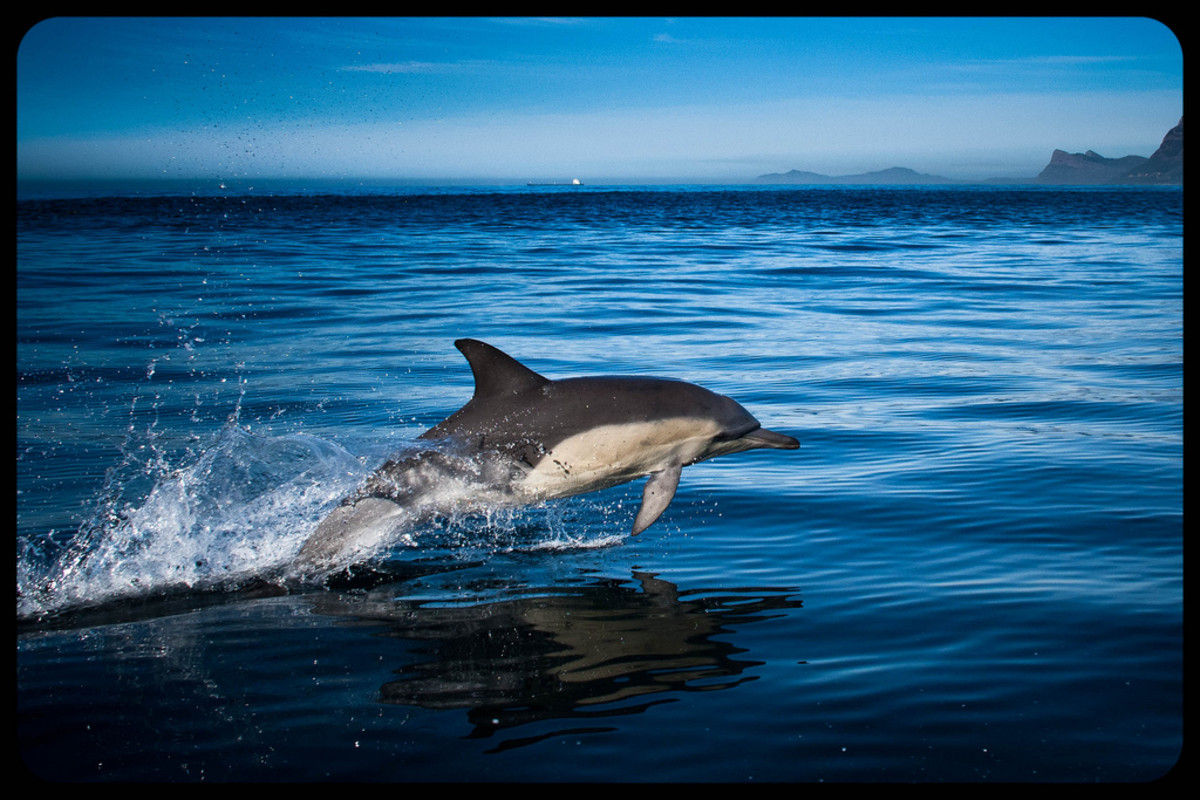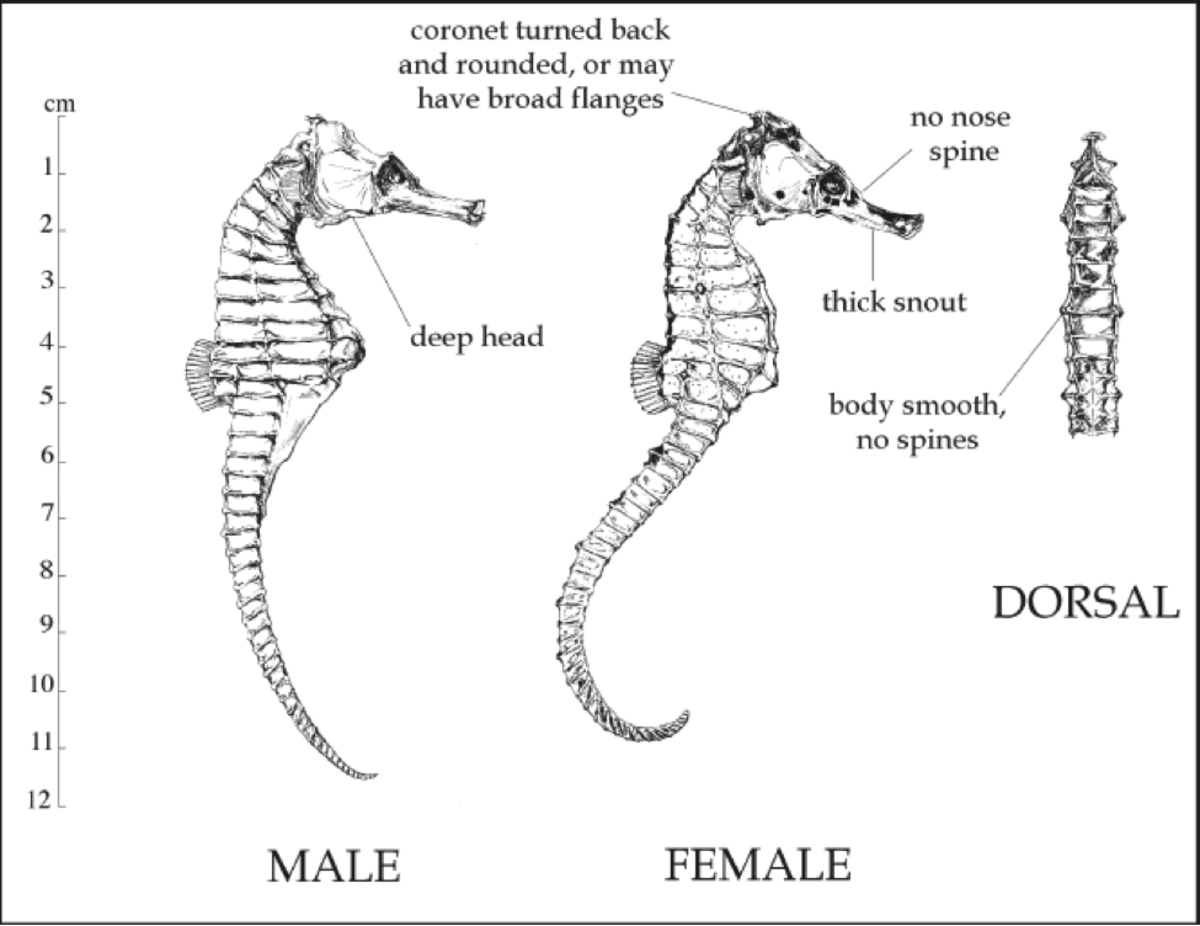- HubPages»
- Education and Science»
- Life Sciences»
- Marine Biology
The Awesome Intelligence of Cetaceans Part 2

If you missed part 1 please click here!
In part one, I discussed several examples of studies involving dolphins that showed the exceptional intelligence of these animals. While they were certainly impressive, these studies were carried out using captive dolphins that were not acting naturally. They also did not show the amazing behavior exhibited by other cetacean species that were simply too rare or too large to keep in captivity. Cetaceans from all over the world continue to show their remarkable intelligence and destroy previous notions of whales simply being cows of the sea. Here we will take a look at some of these species and we will also look at dolphins in their natural setting.
In the wild, all cetacean species engage in certain behaviors such as breaching (when a whale or dolphin jumps out of the water) or spy hopping (this is when a whale holds it's eyes above the surface of the water, sometimes turning to look around). They have also often been seen slapping their flukes or pectoral fins against the ocean's surface repeatedly. Scientists are not completely sure what these behaviors mean but there are many theories. It is possible the loud sudden sound of breaching or slapping the water could stun nearby fish which would make catching them much easier. It could also be an attempt to communicate to nearby whales or even humans that they wish to be left alone.

Humpback Whales
Social Behavior
These whales may not be the most glamorous looking cetacean species, but they are quite intelligent and even friendly. They will frequently approach boats and have become a favorite with whale watchers. Humpback whales are also well known for their complex songs, which may be repeated for 24 hours or more with hardly a pause. Each song has somewhere between two and nine separate components, always in the same order, and can last anywhere from a few minutes or up to half an hour. A humpback whale is constantly improving and refining its song so that it changes gradually over its lifetime. These singers also tend to incorporate the changes of nearby humpbacks into their own song. As a result songs in an area sound similar but each is unique. Scientists have not determined exactly what these songs mean but it is believed to have something to do with mating. This is because they are sung exclusively by males and singers are most often approached by other males, resulting in a territorial dispute. Regardless, these songs are complex and could have some subtle meaning that we are unaware of.
Humpback whales tend to be solitary animals although they do sometimes travel with other humpbacks and even other species for several days at a time. As with all baleen whales, they also make excellent mothers and do not let calves stray more than a body length away from them for the first year. Adult males can be fiercely competitive during mating season and will bash each other with their heads or flukes, sometimes causing deep scars and even shearing off the dorsal fin on occasion.
Feeding Behavior
Humpback Whales have also developed a very interesting and inventive method of feeding. Although they are normally thought to be solitary animals, these whales have learned to work together while feeding so that all the whales in an area can get their share. It is unknown how they communicate to each other but each whale plays an important part. First, they dive under a group of small fish and begin to use high pitched vocalizations to frighten them, causing them to crowd together at the surface. Then each whale begins to spiral upwards while expelling air through their blow hole. This creates a net of bubbles that surrounds the fish and pushes them even closer together. Then, once a signal is given, each whale rises to the surface with its large mouth open, catching a mouthful of fish. I've attached this video so you could see this interesting behavior for yourself.
Right Whales
These cetaceans tend to travel alone or in small groups unless food is plentiful. Before their populations were decimated by whaling, they were seen in groups of up to 100 individuals. They tend to stay near the surface and simply swim with their mouth open to catch tiny plankton in the water for food. One interesting behavior seen by these whales is found in the southern right whale populations. These whales have an interesting behavior that makes them appear to be sailing! Along the coast of Argentina, where there are strong, steady winds, the southern right whale can be seen with its tail held up out of the water against the wind. This appears to push them along with the wind although it is unclear why they would do this unless it is helpful for temperature regulation or purely for fun.
Right whales also occasionally form small gatherings known as “surface area groups”. These groups consist of two or more whales socializing, frequently rolling or touching each other and vocalizing. Surface area groups were believed to be important only for mating. We now know it is more than just mating because not all groups consist of adult males and females. These groups occur year round, while births are usually only between December and March, and sometimes females in these groups are already pregnant. Right whales may be more social than was previously thought.
Gray Whales
Gray whales were once known as “Devilfish” by whalers because these cetaceans were fiercely protective of their young and would violently defend them. They are now one of the best known whale species because of their preference for inshore waters. Gray whales are bottom feeders, they use their mouths and baleen plates to sift through the mud at the bottom of the ocean for food. They often approach humans and do not seem to shy away from physical contact. Some will hold their heads up out of the water directly next to a boat as if encouraging humans to touch them. Even mother gray whales have been seen bringing their calves right up to our boats and encounters can last for hours. Unfortunately some young gray whales become too familiar with boats and are injured by propeller blades. It is important to remember that although these whales have a reputation for being friendly, some are still shy and elusive and they should never be chased.
These are all great examples of interesting behavior exhibited by baleen whales. However, the most exciting evidence for the intelligence of cetaceans always seems to come from the toothed whales. This may be because social species that rely on food that is difficult to find and catch show the greatest potential for the development of high intelligence. The large baleen whale species simply open their mouths, fill them with water and then filter out tiny plankton or krill. They are still quite intelligent but perhaps their lifestyle does not require them to use their skills as much as a killer whale or other dolphin species. This difference in intelligence has not been proven and should not be considered a fact. We must remember they have evolved to fit an extremely different environment than humans have and their intelligence has developed to suit their own needs. Perhaps they are smarter in their own environment than we realize. Regardless, here are some examples of amazing natural behaviors of toothed whales.
The Sperm Whale
The largest of the toothed whales, the sperm whale has been very difficult to study and it has only been in recent years that we have learned most of what we know about them. This is because these whales spend much of their lives deep under water and far off shore. Some deep dives can last for hours. Males and females of this species also spend much of their time in separate locations. Sperm whales are the most sexually dimorphic cetacean species. Males or “bulls” can reach a length of up to 67 feet while females average around 36 feet. This is believed to be the reason that males split from their female relatives at adulthood and travel to the polar waters where food is more plentiful. Adult females travel together in what is known as a “nursery”, where they care for calves and juveniles and can form groups of up to 50 whales. These whales are all at least distantly related and females take turns nursing and caring for the young. This is ideal for sperm whale calves because they are often targets of sharks or killer whales. When a predator approaches, all the adults in the nursery surround the young and will protect them at all costs. Males will usually stay in these groups until around 6 years of age when they will either join a “bachelor” group or simply go it alone. They will feed in the polar waters until they are large enough to compete for females during breeding season. Fighting can be intense but serious damage is quite rare. It is mostly ritualized behavior intended to intimidate rather than cause harm.
The narration is in another language but the footage is great.
Dolphin Species
The dolphin family makes up the large majority of toothed whale species. They vary greatly in size, shape and coloration. Some even live exclusively in freshwater rivers.
Social Behavior
Social behavior is extremely important to most dolphin species. They spend much of their days rubbing, touching, mating and engaging in synchronized behavior such as bow riding or breaching. However, groups of dolphins sometimes show decidedly unsocial behavior in that they will avoid other groups and some dolphins even live solitary lives. Studies focusing on dolphin communication have discovered that dolphins may actually have names! Dolphins seem to each make a unique sound and other dolphins appear to mimic the sound of an individual in order to call to it. Dolphins are altruistic and have often been observed going out of their way and even putting their life at risk to come to the aid of an individual even if it is from another species, including humans. Some scientists believe this is not a conscious decision to perform an act of kindness but rather a result of their development of altruistic behavior towards other dolphins. A dolphin that assists other injured dolphins has a higher chance that some of its DNA will be passed on even if it has no offspring because the injured dolphin might be an aunt, uncle, cousin or more distant relative. Personally, I believe it is more than mere instinct and there are many who agree including marine biologists.
Not all of their behaviors are so innocent however, some dolphins can be quite aggressive. Some males will kill dolphin calves and females have been seen stealing the calf of another less dominant mother. Dolphins have also been seen beating porpoises to death for reasons unknown. Porpoises do not usually share the same diet as dolphins so it must have been more than eliminating competition. They also do not eat the porpoises. A team from the Cetacean Research and Rescue Unit discovered some of these porpoises and commented that it was “perhaps the worst example of inter-specific aggression any of us had ever seen.” Marine biologist Dr. Ben Wilson saw video footage of one of these attacks and explained that these dolphins could use echolocation to target vital organs in order to cause the most damage. The full article can be found here. Although it is disturbing to think of these friendly looking animals as killers, remember how violent our own species has been. We have done all of these things and much more. What could be more human than taking lives for no logical reason?
They are also highly sexual animals. Dolphins engage in sexual activity with other dolphins species and even attempt it with humans. There are several different hybrids that have been seen including Risso's and bottlenose dolphin hybrids, spotted dolphin and bottlenose hybrids and false killer whale and bottlenose hybrids (called wholphins) in the wild. In captivity some of these hybrids have also occurred as well as a rough toothed dolphin and bottlenose hybrid. They are one of the few species that has sex for pleasure and it often occurs between members of the same gender. Males sometimes show aggression towards the female and have even been observed chasing and forcing intercourse on female dolphins. Some males form alliances and will keep a female isolated in order to reproduce with her when she comes into season. Females do attempt to escape and are usually chased and bitten. Sometimes one alliance will try to steal the female of another. This unpleasant behavior of forced intercourse is something that, unfortunately, is still seen in humans today.
Also like humans, dolphins enjoy playing. Dolphins play with all sorts of objects including seaweed, rocks, sticks, sponges and they also engage in play fighting. According to one source, they also seem to enjoy harassing sea birds and turtles. Dolphins also love riding the waves formed by boats and even appear to surf along the coast like humans do. Another interesting behavior is the creation of bubble rings. Beluga whales and dolphins have both been observed injecting air into the water to form swirls or rings of rotating bubbles which they may swim through or bite, sometimes appearing to enjoy the feeling of bubbles along its body.
Feeding Behavior
Dolphins have a variety of hunting methods. A common method involves herding a school of fish into a ball and then taking turns diving through them so that each gets their share. Another method is called “strand feeding” where the dolphins herd fish towards a shallow beach where the trapped fish become easy prey. They have also been seen slapping fish with their flukes and tossing them out of the water to stun them. Dolphins near the coast of florida have been seen making rings of sediment around fish by kicking up sand with their tail. Perhaps most interesting is the fact that there have been reports of dolphins cooperating with human fishermen for thousands of years. Currently a group of dolphins has become famous for this along the coast of Brazil. The video of this is found in Part 1. Dolphins off the coast of western Australia actually use sponges, which they hold over their mouth, to probe the sand at the sea floor to search for small fish that hide there. What these dolphins are doing is exciting for scientists because they have been observed teaching it to their offspring. It appears that daughters are the most interested in learning this technique while young males apparently had little or no interest. This is significant however because it is evidence of culture in dolphins.
As you can see, cetaceans are unlike any other animal. These are all interesting behaviors from a variety of different species. You may be wondering however, why there is no mention of the great Killer whale. After all these beautiful animals have been extensively studied and many are kept in captivity. For the conclusion of this piece on the intelligence of cetaceans, as well as a vast quantity of knowledge on Killer whales and a list of my sources, please visit The Awesome Intelligence Of Cetaceans Part 3 – Killer Whales.
You may also enjoy:
The Strange and Beautiful River Dolphins
The Awesome Intelligence of Cetaceans Part 1
The Difference Between Baleen and Toothed Whales
What You Should Know About Declawing









